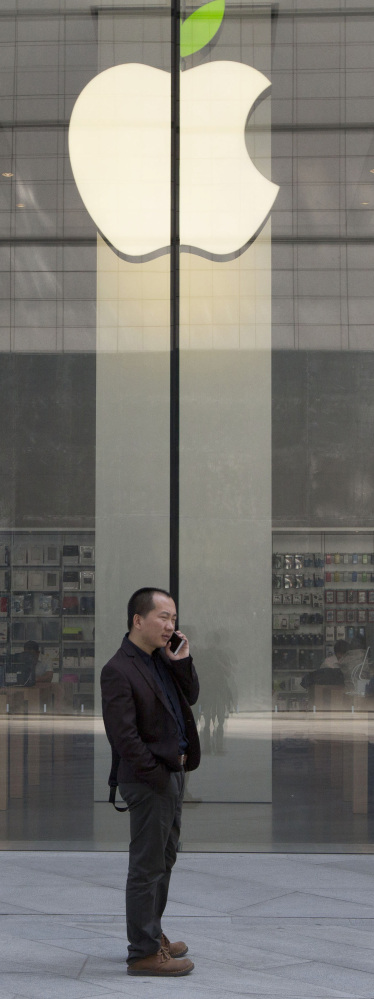NEW YORK — At $654 billion, Apple is the stock market’s heavyweight.
Like a handful of other “big cap” companies such as Microsoft and Exxon Mobil, the iPhone maker’s market value means that when its shares move, so can the market. And these are the companies that influence your stock portfolio.
“The combination of Apple’s size and price moves, results in an enormous impact on indices,” says Howard Silverblatt, a senior index analyst for S&P Dow Jones Indices.
Lately, Apple’s influence has been a drag.
Since closing at a record $133 on Feb. 23, Apple has slumped to $115.40, wiping $115 billion off the value of its stock. Between then and Wednesday’s close, the Standard & Poor’s 500, the most widely-tracked stock index, was down 0.5 percent.
Without Apple, the decline would have been a gain of 0.1 percent, according to S&P Dow Jones Indices, the company behind the S&P 500 index and the Dow Jones industrial average.
Of course the opposite is also true, when Apple’s shares rise, the market can get a lift. Either way, for every $1 change in Apple stock, the S&P 500 rises or falls 0.6526 points, says Silverblatt.
The impact of the technology giant is so big that S&P Dow Jones Indices has created a technology index that excludes Apple.
That allows investors to separate what’s going on with tech stocks from what’s going on with Apple because, while they’re similar, the two might not be the same.
For example, the S&P 500 information technology sector is down 1.3 percent since Apple’s record close. Take out Apple and the group has actually gained 1.8 percent.
History suggests that companies as dominant as Apple don’t tend to stay top dog for long. Competitors emerge, new products roll out, and growth can slow.
Exxon Mobil, which Apple surpassed to become the biggest publicly-traded company in August 2011, has slumped over the last year along with the price of oil. To be sure, Exxon Mobil is still big, with a market value, or capitalization, of $322 billion. But it has slipped to third in the ranking of S&P heavyweights, behind Microsoft.
In the early 1980s, computer company IBM was the stock market’s big gun. Personal computers were still a new concept and IBM was one of the industry’s dominant players. At the end of 1985, the company’s stock made up 6.4 percent of the S&P 500’s total value, much bigger than Apple’s current 3.6 percent.
Since then, the company has had to grapple with fierce competition from more nimble rivals. Like Exxon, Big Blue is still powerful, but it now ranks as the 28th largest in the S&P 500, making up 0.8 percent of the index.
Below are the six biggest companies in the S&P 500, ranked by market capitalization, which is determined by shares outstanding multiplied by stock price.
• APPLE
Market Value: $654 billion
Weight in S&P: 3.6 percent.
• MICROSOFT
Market Value: $380 billion.
Weight in S&P: 2.1 percent.
• EXXON MOBIL
Market Value: $322 billion
Weight in S&P: 1.7 percent.
• WELLS FARGO
Market Value: $297 billion
Weight in S&P: 1.5 percent
• JOHNSON & JOHNSON
Market Value: $276 billion.
Weight in S&P: 1.5 percent.
• GENERAL ELECTRIC
Market Value: $261 billion.
Weight in S&P: 1.4 percent.
Send questions/comments to the editors.



Success. Please wait for the page to reload. If the page does not reload within 5 seconds, please refresh the page.
Enter your email and password to access comments.
Hi, to comment on stories you must . This profile is in addition to your subscription and website login.
Already have a commenting profile? .
Invalid username/password.
Please check your email to confirm and complete your registration.
Only subscribers are eligible to post comments. Please subscribe or login first for digital access. Here’s why.
Use the form below to reset your password. When you've submitted your account email, we will send an email with a reset code.